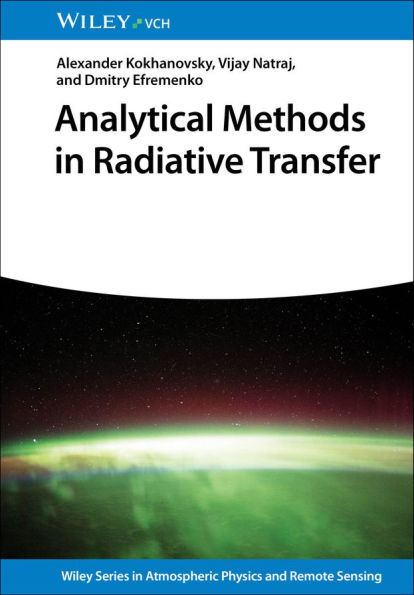In Analytical Methods in Radiative Transfer, a team of distinguished researchers delivers a comprehensive exploration of solutions to practical problems of modern atmospheric optics related to solar light interaction with the terrestrial atmosphere and the remote sensing of clouds, aerosols, and gases. The authors describe analytic methods in radiative transfer that help explain atmospheric phenomena.
The book includes discussions on the interaction of solar light with the atmosphere. Readers will also benefit from thorough reviews of various analytical radiative transfer techniques, for various turbid media, including media with phase functions extended in the forward direction, and also semi-infinite, non-absorbing, weakly absorbing, and strongly absorbing light scattering media.
Analytical Methods in Radiative Transfer also includes:
- A thorough introduction to exact solutions of the radiative transfer equation, including situations of single scattering, as well as isotropic and Rayleigh scattering
- A comprehensive exploration of approximate solutions for scalar radiative transfer, including single and multiple light scattering separation and the case of semi-infinite media such as snow
- In-depth examinations of the applications of analytical methods in atmospheric radiative transfer, including aerosol remote sensing, cloud remote sensing, and the remote sensing of trace gases
Perfect for meteorologists, climatologists and graduate students studying physics, Analytical Methods in Radiative Transfer is also an indispensable resource for geophysicists seeking a practical exploration of modern atmospheric optics.
In Analytical Methods in Radiative Transfer, a team of distinguished researchers delivers a comprehensive exploration of solutions to practical problems of modern atmospheric optics related to solar light interaction with the terrestrial atmosphere and the remote sensing of clouds, aerosols, and gases. The authors describe analytic methods in radiative transfer that help explain atmospheric phenomena.
The book includes discussions on the interaction of solar light with the atmosphere. Readers will also benefit from thorough reviews of various analytical radiative transfer techniques, for various turbid media, including media with phase functions extended in the forward direction, and also semi-infinite, non-absorbing, weakly absorbing, and strongly absorbing light scattering media.
Analytical Methods in Radiative Transfer also includes:
- A thorough introduction to exact solutions of the radiative transfer equation, including situations of single scattering, as well as isotropic and Rayleigh scattering
- A comprehensive exploration of approximate solutions for scalar radiative transfer, including single and multiple light scattering separation and the case of semi-infinite media such as snow
- In-depth examinations of the applications of analytical methods in atmospheric radiative transfer, including aerosol remote sensing, cloud remote sensing, and the remote sensing of trace gases
Perfect for meteorologists, climatologists and graduate students studying physics, Analytical Methods in Radiative Transfer is also an indispensable resource for geophysicists seeking a practical exploration of modern atmospheric optics.

Analytical Methods in Radiative Transfer
192
Analytical Methods in Radiative Transfer
192Related collections and offers

Product Details
| ISBN-13: | 9783527698974 |
|---|---|
| Publisher: | Wiley |
| Publication date: | 09/04/2025 |
| Series: | Wiley Series in Atmospheric Physics and Remote Sensing |
| Sold by: | JOHN WILEY & SONS |
| Format: | eBook |
| Pages: | 192 |
| File size: | 13 MB |
| Note: | This product may take a few minutes to download. |
